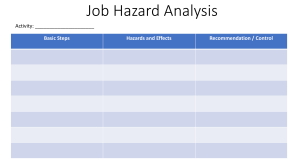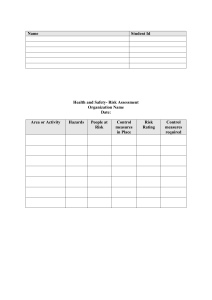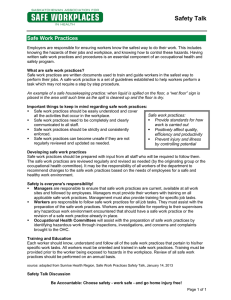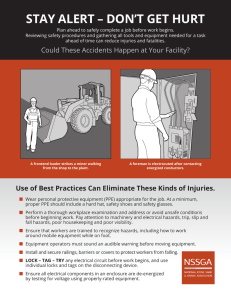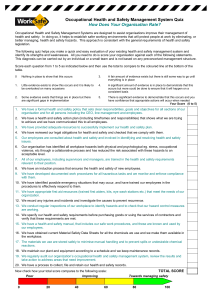Occupational Safety & Health Hazards in the Philippines
advertisement
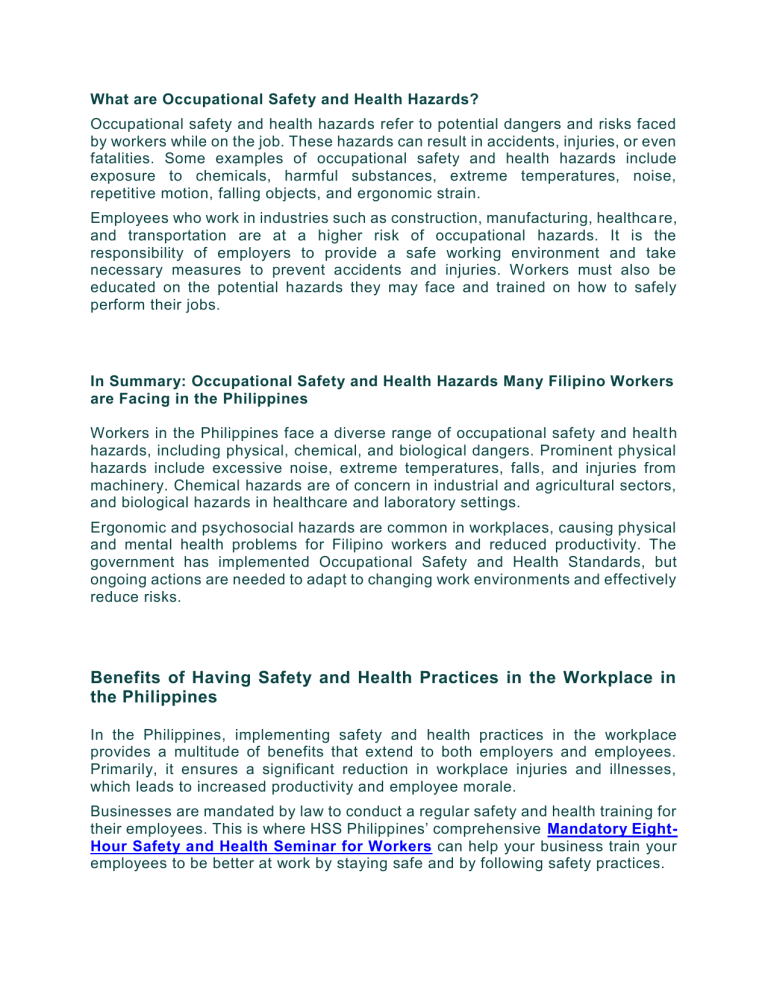
What are Occupational Safety and Health Hazards? Occupational safety and health hazards refer to potential dangers and risks faced by workers while on the job. These hazards can result in accidents, injuries, or even fatalities. Some examples of occupational safety and health hazards include exposure to chemicals, harmful substances, extreme temperatures, noise, repetitive motion, falling objects, and ergonomic strain. Employees who work in industries such as construction, manufacturing, healthca re, and transportation are at a higher risk of occupational hazards. It is the responsibility of employers to provide a safe working environment and take necessary measures to prevent accidents and injuries. Workers must also be educated on the potential hazards they may face and trained on how to safely perform their jobs. In Summary: Occupational Safety and Health Hazards Many Filipino Workers are Facing in the Philippines Workers in the Philippines face a diverse range of occupational safety and healt h hazards, including physical, chemical, and biological dangers. Prominent physical hazards include excessive noise, extreme temperatures, falls, and injuries from machinery. Chemical hazards are of concern in industrial and agricultural sectors, and biological hazards in healthcare and laboratory settings. Ergonomic and psychosocial hazards are common in workplaces, causing physical and mental health problems for Filipino workers and reduced productivity. The government has implemented Occupational Safety and Health Standards, but ongoing actions are needed to adapt to changing work environments and effectively reduce risks. Benefits of Having Safety and Health Practices in the Workplace in the Philippines In the Philippines, implementing safety and health practices in the workplace provides a multitude of benefits that extend to both employers and employees. Primarily, it ensures a significant reduction in workplace injuries and illnesses, which leads to increased productivity and employee morale. Businesses are mandated by law to conduct a regular safety and health training for their employees. This is where HSS Philippines’ comprehensive Mandatory EightHour Safety and Health Seminar for Workers can help your business train your employees to be better at work by staying safe and by following safety practices. This adherence to safety standards not only helps companies in avoiding legal penalties associated with non-compliance but also enhances their reputation in the competitive market. A safe working environment can also lead to lower rates of absenteeism, ensuring a steady operational flow and contributing to the overall efficiency and success of the business. . It also fosters a positive company culture, which plays a critical role in employee retention and satisfaction. Moreover, a commitment to health and safety practices results in long-term financial benefits, including reduced costs related to workers’ compensation, medical leave, and potential litigation. It also fosters a positive company culture, which plays a critical role in employee retention and satisfaction. A business that prioritizes the well-being of its workforce demonstrates social responsibility and builds trust within the community, further solidifying its standing as a desirable employer and a conscientious corporate citizen. These practices not only enhance the day-to-day operations but also contribute to the sustainable growth and resilience of businesses in the Philippines.
